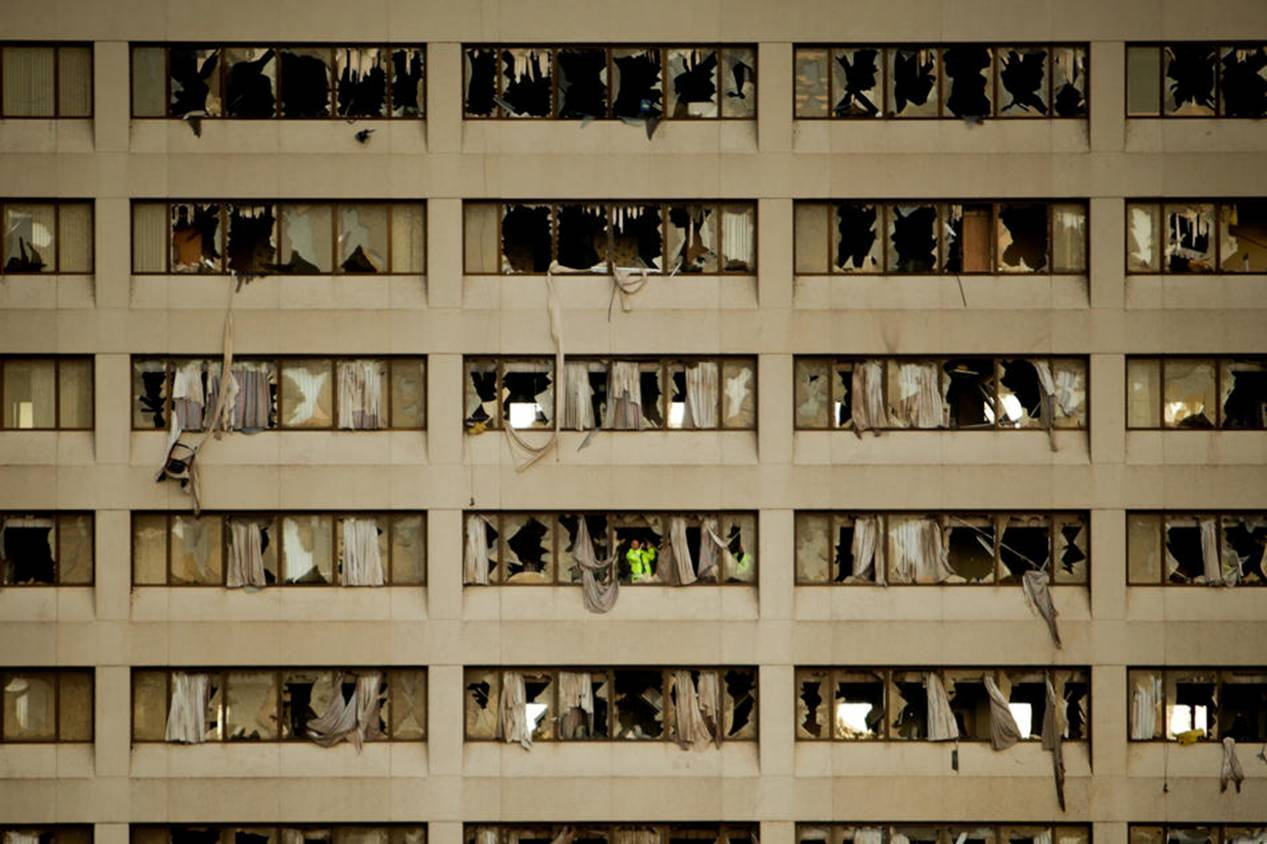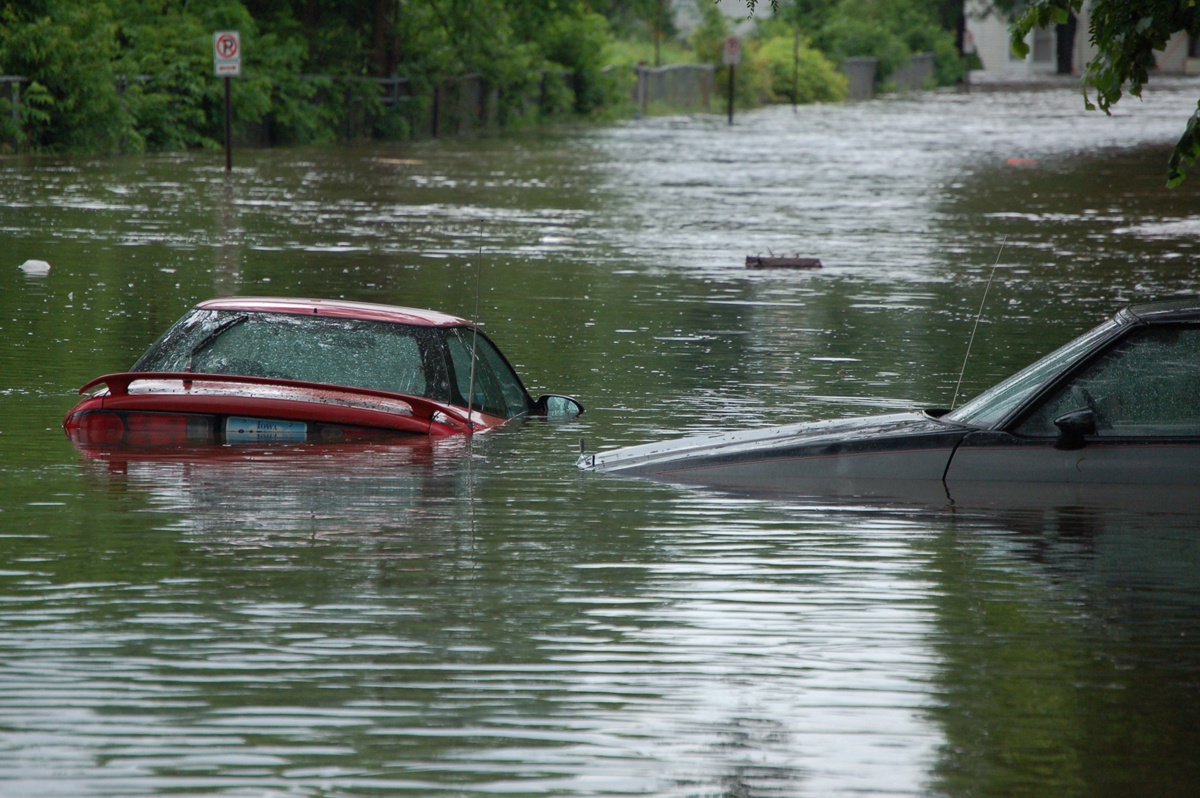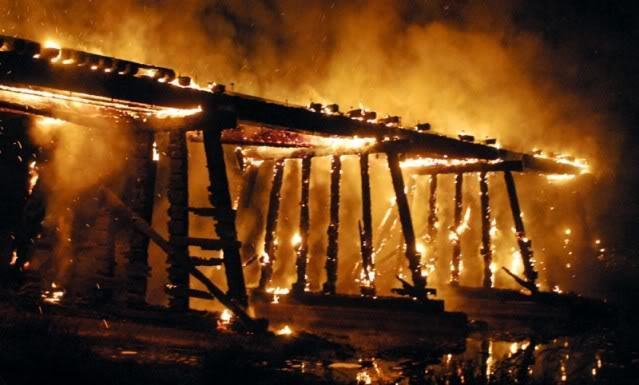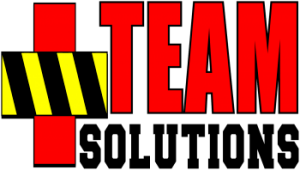What are some common or expected hazards encountered while performing a Preliminary Damage Assessment?
The same hazard may create a different level of risk to different responders.
- For example, 12 inches of toxic flood water is more of a risk to someone wearing flip-flops with a cut on their leg than it is for someone wearing hip waders. Same hazard and same likelihood of encountering it but different risk based on the effort - wearing appropriate Personal Protective Equipment or PPE - to lessen the impact of that hazard.
In an area where there is widespread but varied building damage, such as after a tornado, there are many predictable and some unexpected hazards.

Tornado Damage

Flood Damage

Fire Damage

Winter Storm Hazard
Review the partial list below and consider what else you and your team may encounter after an incident in your area:
[one_half_first]
- Fall hazards from above
- Trip hazards from below
- Secondary collapse
- Contamination v. Exposure
- Gas Release
- Fire / Smoke
- Terrorism
- HVAC
- Water Supply
- Gas delivery systems
- Sterilization Processes
- Inventory
- Staff casualties
- Release of infectious agents
- Regional power outage
- Workplace violence
- Hazardous Materials (HazMat)
- Electrical Hazards
[/one_half_first][one_half_last]
- Mental health concerns
- Civil unrest (family on scene, etc.)
- Patient care
- Reduced visibility (low light, smoke, debris, etc.)
- Noise
- Exposure of medical records
- Equipment damage or failure
- Unfamiliar surroundings (signage gone or obscured)
- __________________________________
- __________________________________
- __________________________________
- __________________________________
- __________________________________
- __________________________________
- __________________________________
- __________________________________
[/one_half_last]
Power Tip
The presence of hazards can shrink and expand as an incident progresses.
For instance, a debris pile fire in the first hour will either get worse on its own if it finds more fuel to burn or it may get better if it burns itself out.
Constant vigilance is required for responders while performing a Preliminary Damage Assessment in order to effectively manage their risk.
